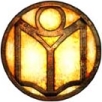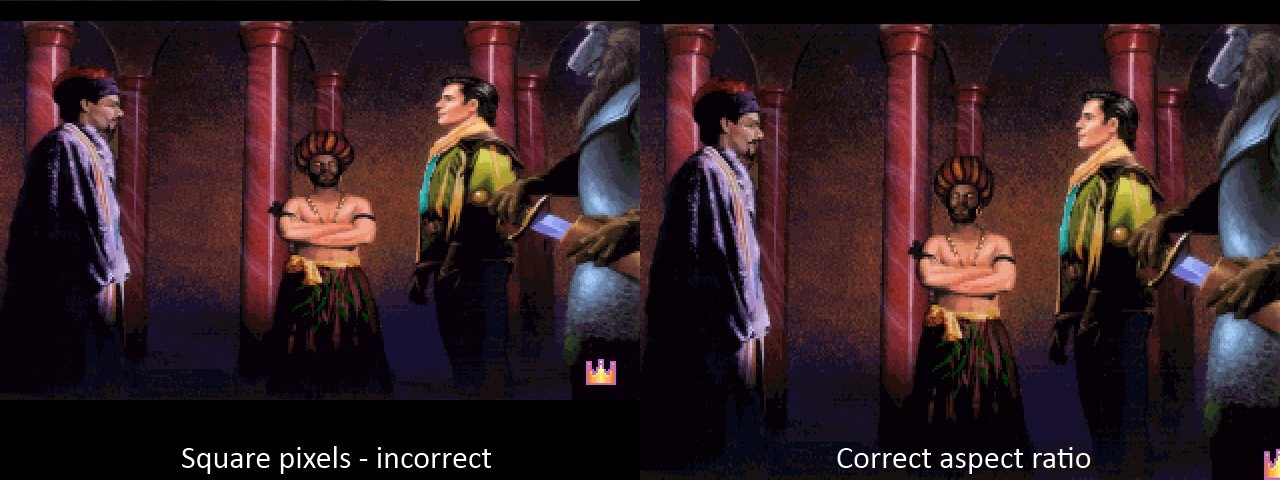


The Guild of Let’s Players is my YouTube channel. There’s no actual guild; the name’s just a play on the various D’ni guilds in the Myst series of games. I create Let’s Plays, which are playthroughs of games with added commentary. I primarily do Let’s Plays of adventure and puzzle games. Amongst the games I’ve Let’s Played are most of the Myst games, The Longest Journey and Dreamfall, and many Sierra classics like Space Quest, King’s Quest and Gabriel Knight.
I strive to have the highest possible video and audio quality. For this reason, I always record the video using a lossless format (or when using Fraps I use its default format, which is nearly lossless), and encode the video using h.264 (for HD) or Xvid (for 480p; YouTube doesn’t like 480p videos in h.264 for some reason) with very high quality settings. Any artefacts, glitches, or loss of quality you see in the videos are the result of YouTube’s conversion process; they are not present in the originals I upload.
Many older games use a resolution with non-square pixels. EGA and VGA games such as those made by Sierra typically use a resolution of 320x200, which has a ratio of 4 by 2.5, but which nonetheless was meant to be shown on regular 4:3 monitors. As a result, the pixels are slightly taller than they are wide (they had a 5:6 pixel aspect ratio).
Almost all modern monitors use square pixels. When the original 320x200 image is shown on a monitor with square pixels, the image appears vertically squashed: circles become ovals, people look shorter, etc. The vast majority of gameplay videos on YouTube of games from this era unfortunately suffer from this issue. In order to make sure the games display correctly, I always apply aspect ratio correction so they appear in the correct 4:3 aspect ratio.
Below you can see a scene from King’s Quest 6 both without aspect ratio correction (left) and with aspect ratio correction (right).

An easy way to tell if a Sierra game is being shown in the correct aspect ratio is to look at the Sierra logo at the start, which is supposed to be round.
Game audio is captured directly from the game in stereo (YouTube doesn’t support multi-channel sound). I record live narration while playing, but the narration is recorded as a separate audio file. I combine the two audio tracks during editing, allowing me to make sure the relative volumes of my voice and the game audio are okay and both I and the game characters can be understood.
Back in the days before CD-ROM, games were distributed on floppy disks, which have a very low storage capacity. As a result, games couldn’t use much digitised audio, since even a single MP3 song would take several disks (and MP3 hadn’t been invented yet; compression formats back then were far less efficient). Instead, the games usually contained music in MIDI or a related format. This means they contain a series of instructions (like which notes to play with which instruments) that a synthesizer can turn into music.
In the late eighties and early nineties, the most common synthesizer found in personal computers was the Yamaha OPL2, used by the popular AdLib and Sound Blaster cards. The OPL2 used FM synthesis (not related to FM radio) to produce monaural sound with reasonable quality for its low price, but it wasn’t all that good.
When Sierra wanted to start using music in their games (King’s Quest 4 was the first computer game ever to support sound cards), they wanted to hire professional composers. However, most of those composers weren’t interested in working with a low quality synthesizer like the OPL2.
Sierra negotiated a deal with the Roland Corporation to use the Roland MT-32 Multi-Timbre Sound Module, and promote the MT-32 with their games. The MT-32 is a programmable synthesizer using Linear Arithmetic synthesis—a form of wavetable synthesis—and was much higher quality than the OPL2. This meant Sierra could attract professional composers like they wanted. Unfortunately, while the Roland MT-32 was an entry-level synthesizer for professional musicians and was cheap in that market, compared to other PC sound solutions it was very expensive: a Sound Blaster cost about $100, while an MT-32 was around $550.
Sierra still supported the AdLib and Sound Blaster (I guess they realized that most people couldn’t afford an MT-32), but they would write the music for the MT-32, and then convert it to play on the OPL2. Those conversions weren’t particularly good, so they were even lower quality than what the OPL2 was really capable of. On top of that, if you play the games today on DOSBox or ScummVM you’re not using a real OPL2; instead it’s simulated in software. The quality of that is close to, but not quite the same as a real one. As a result, there’s a dramatic difference between real MT-32 music and emulated OPL2 music for Sierra games. Here’s a comparison.
To get the best possible music quality for my Sierra Let’s Plays of that era, I use a genuine first-generation Roland MT-32 from 1987. The MT-32 is an external module, connected to my PC using a USB MIDI cable, and with the sound output connected to my sound card’s line-in. DOSBox and ScummVM forward the game’s MIDI data to the USB MIDI port, so the MT-32 can play it.
Around the start of the nineties, the General MIDI standard emerged. Before this, MIDI devices would all use their own instruments, number of channels, and control changes. The GM standard mandated a standard set of instruments, the use of 16 channels with percussion on channel 10, and various other things. Unfortunately, the MT-32 is not General MIDI compatible (because it predates the standard).
Sierra responded to this by no longer writing music specifically targeted at the MT-32. Instead, their composers would use General MIDI synthesizers when writing the music and the games would offer General MIDI as an output option. This had the advantage that the games could now sound good on a far larger range of synthesizers. The MT-32 was still supported, but they just sent it some commands to make it sort of compatible with GM, and didn’t use any of its special features. The MT-32 was therefore no longer the best option.
One of the most popular General MIDI synthesizers in the nineties was the Roland Sound Canvas, and much game music was written with the sound set of the Sound Canvas in mind. For this reason, I use a genuine Roland Sound Canvas SC-88 from 1994 for those newer Sierra games. The list of games below indicates which Let’s Plays used the MT-32 or SC-88.
Below you can see my two Rolands sitting side by side.
